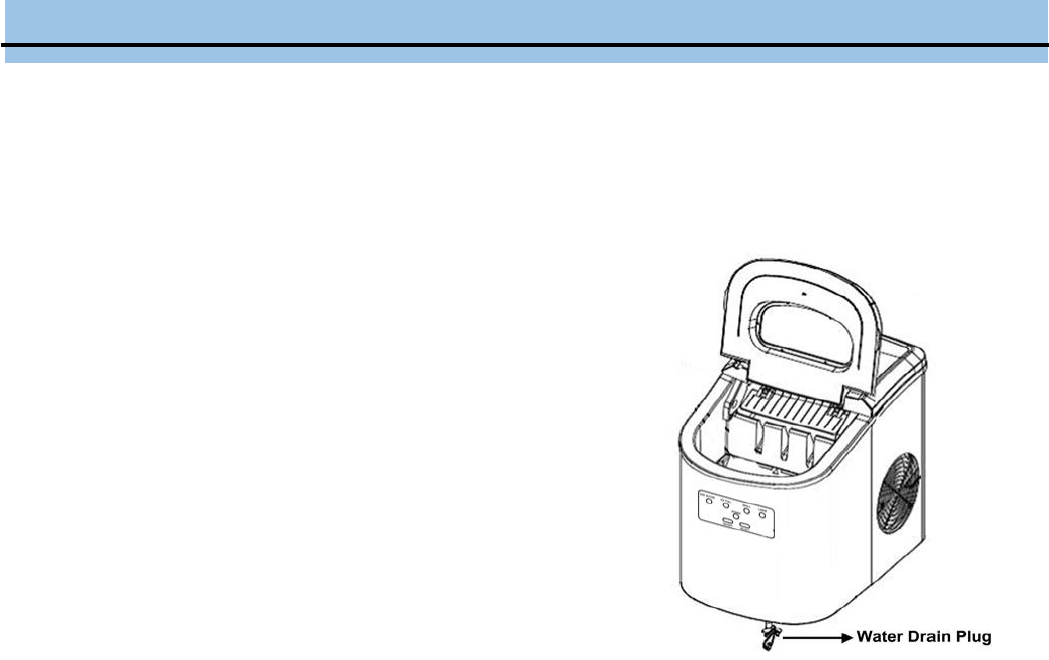
9
CARE AND MAINTENANCE
CAUTION : Failure to unplug the ice maker could result in electrical shock or personal injury.
DRAINING YOUR ICE MAKER
Follow the steps below to drain the unit.
1. Carefully move the unit towards a sink or other suitable location
for draining
2. Remove the rubber drain plug from the bottom of the water res-
ervoir to drain all the water.
3. Let the water drain from the drain plug.
4. Firmly install the rubber drain plug into the drain port.
NOTE: WARNING! Do not tip the unit over while there is water
in the reservoir.
CLEANING YOUR ICE MAKER
To ensure the cleanliness of the ice cubes, water in the reservoir should be replaced every 24 hours.
1. Remove the drain plug to drain remaining water from the water reservoir when the ice maker will
not be used for long period of time. Screw the drain plug back in place after the water has been
drained.
2. Always use potable or drinkable water.
3. Please clean your Ice maker regularly. When cleaning, unplug the unit and remove the ice cubes.
Use a diluted solution of water and vinegar to clean the inside and the outside surface of the Ice
Maker. Do not spray Ice maker with chemicals or diluted agents such as acids, gasoline or oil. Rinse
thoroughly before starting.
When the appliance is not to be used for some time, for example for periods exceeding 48 hours, it is
recommended that it be disconnected from the electricity supply and any remaining ice cubes and
water be removed. Excess water in the water reservoir should be removed using paper kitchen tow-
els or similar product. It is recommended that the appliance is cleaned on a regular basis, perhaps
once every three months or more frequently in areas where chalky deposits can be a problem. Two
cleaning solutions may be used. One is one part vinegar to 10 parts water, the other is 1 part bicar-
bonate of soda to 5 parts water. In both cases the appliance should be allowed to complete one ice
making cycle then left to stand for 6 hours before being thoroughly rinsed with fresh water and dried
as detailed in the previous paragraph. Solvents, detergents and abrasives must not be used for
cleaning. The appliance exterior can be cleaned with a damp cloth and then polished with a soft, dry
lint free cloth.













